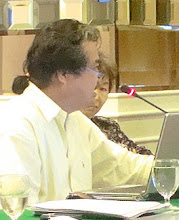No segregation, no collection
The City has two policies in its advocacy for zero waste. "If they don't segregate, we don't collect," said Mayor Lacson. "Their waste are left in front of their houses for a few days just to impress to the people that segregation should really start at source."
Lacson said they also do not encourage the use of plastic garbage bags. While an ordinance is yet to be passed by the city council that would penalize non-segregation of garbage, advocacy work is already being done on the barangay (village) level. Genesys had been the city government's partner in this information and education campaign that runs the entire gamut of the garbage cycle. Princess Solis, acting executive director of Genesys, said their advocacy campaign leans towards a change in lifestyle because technical know-how can help reduce garbage. "The garbage is no longer a problem; we have to work on the people now," she said in Filipino. Her team employs community catalysts who conduct training for key individuals and leaders in a community, which in turn develop their respective barangay plans. These plans cover the A to Z of managing their garbage. The city for its part had implemented a garbage collection system that also separates biodegradable wastes from recyclables. Three compactor trucks go around the city daily to collect biodegradable wastes while two open trucks do the rounds for recyclable garbage at scheduled days for each part of the city. While garbage segregation is a process yet to be perfected at source, the attempt to limit disposal to residual waste is high on the city government's agenda. A few manifestations can already be seen.
http://www.inq7.net/reg/2003/nov/08/reg_5-2.htm


No comments:
Post a Comment